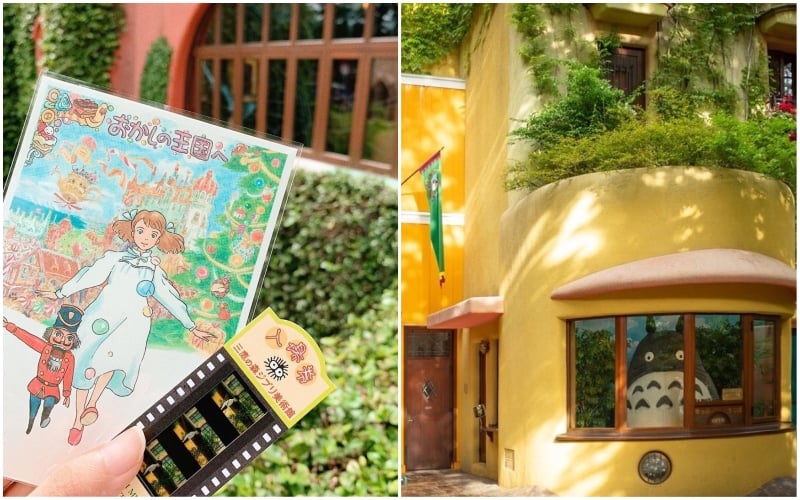In June 1985, Studio Ghibli gained its name from a hot wind that rushes through the Sahara Desert. According to film producer and co-founder Toshio Suzuki, director Hayao Miyazaki picked this name because he hoped that Studio Ghibli would “send a wind of change through the world of Japanese animation.” Today, the studio has produced animated classics such as My Neighbour Totoro and The Wind Rises, enchanting millions of people around the world.
Last spring found this writer stumbling through Inokashira Park and on a path to Ghibli Museum. My first lesson of the day? Ghibli was pronounced “Jib-lee” by my Japanese cousins, Ami and Yumi, who guided me on that fine afternoon in Mitaka, Tokyo.
Also read: 5 Must-See Tokyo Museums For Every Kind of Art Fan
Where the magic happens
If I had any misgivings about whether Ghibli Museum would be worth it, the sight of a giant Totoro manning the ticket booth swiftly dispelled my doubts. Under the shade of trees and vines, my cousins and I roamed around a building splashed in pastel pink, white, green, and yellow. We took photographs against every stained glass window and painted door.
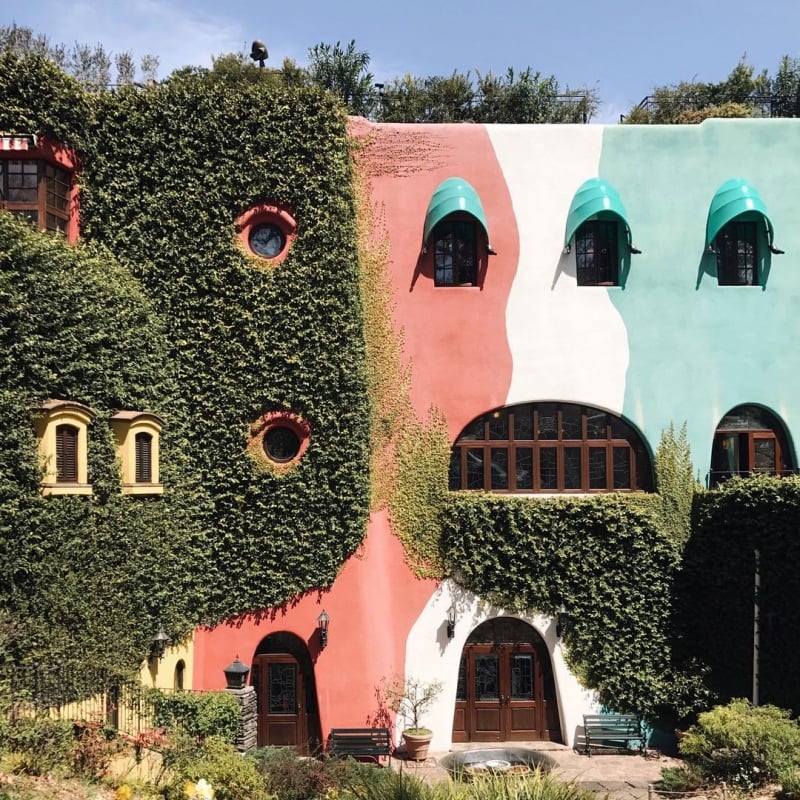
Image credit: colorsofcrysta
Greeting visitors at the gates of Ghibli Museum was a sign that read: “Let’s lose our way, together.” But as soon as we entered the sun-dappled grounds, it became clear to us that there was very little chance of going astray. At most, one could probably wander off into the surrounding greenery, before easily finding the way back to the entrance. It was not a very large museum, after all. If there was any likelihood of us getting lost, it would be from stepping through a different kind of door. Tumbling down a maze that we don’t allow ourselves to venture as often as we should.
Journeys of the imagination
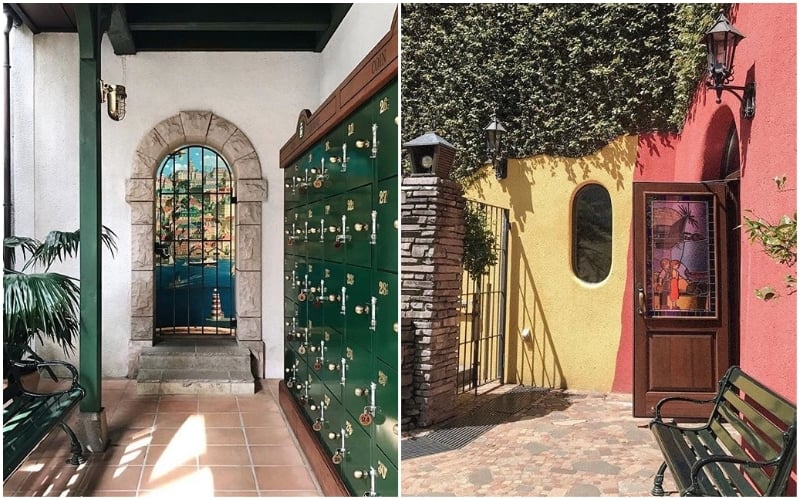
Image credit: colorsofcrysta (left); colorsofcrysta (right)
Walking through the exhibit rooms of Ghibli Museum, I marvelled at the attention to detail. Pinned sketches, illustrations, background art, and concept designs told a story of their journey to the silver screen, from fragile ideas on paper to immersive worlds in motion. Hefty books and photo albums were splayed open, spilling images of planes, forests, lakes, mountains, castles, and clock towers — echoes of the landscapes that became characters in their own right in Princess Mononoke and Howl’s Moving Castle.
Photographs were forbidden inside the museum. But these exhibits were the closest thing to watching a master artist like Miyazaki at his studio, drawing and painting thousands of frames entirely by hand. Every brush stroke felt decisive and meaningful; the slightest change in hue could spell the difference between night and day, or distinguish moments of elation from sadness.
Left to parse these creative tools and instruments on display (without touching, of course), one felt awed and humbled by the amount of love involved in building these fictional landscapes from scratch. More than anything, it struck me that great works of art took their time. And it would surely take me more than one visit to discover all the secrets hidden within the paint-splashed walls of Ghibli Museum, where imagination left no corner untouched.
Tip: where to stay near the Ghibli Museum
Nestled in Tokyo’s suburban neighbourhood of Mitaka, Ghibli Museum’s surroundings offer a variety of accommodations that place you a few minutes away from this charming attraction. Consider cosy vacation rentals like HomeAway, awarded the ‘Best Vacation Rental‘ in TripZilla Excellence Awards 2019. It has everything from quintessentially Japanese homes to spacious urban lofts — a refreshing change of scenery from traditional hotels, especially for anyone travelling with kids or big groups.

Image credit: HomeAway
Castaway on childhood memories
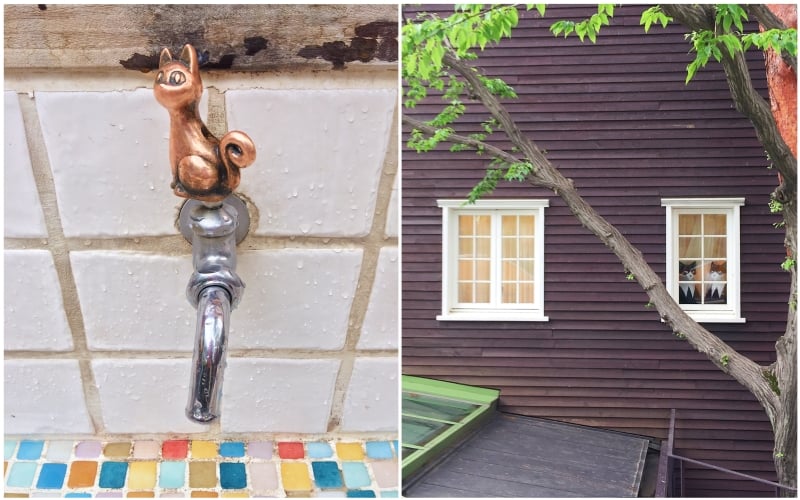
Image credit: Tiffany Conde
Strewn around the grounds of Ghibli Museum were seeds of inspiration from Miyazaki, who designed the museum himself. At the rooftop garden, for example, a life-sized robot statue from Castle in the Sky towered over visitors.
I found generous nods to the characters who populated the films: an enormous stuffed Cat Bus where children could play, water faucets shaped like cats, and cats in suits peering through a window. Needless to say, someone on that design team definitely loved cats.
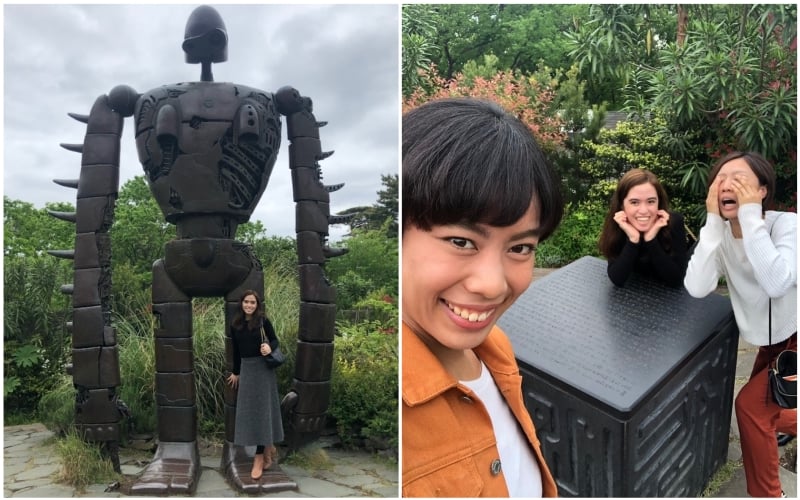
Image credit: Ami Tanaka
It would be too easy to say that the films of Studio Ghibli, and thereby, the museum, belonged mostly to small children. Dare I say, however, that anybody can find a home at Ghibli Museum. Even adults feel compelled every now and then to revisit touchstones from their childhood, partly to see if these things still possess the capacity to amaze them, and partly to know if they are still capable of being moved. That feeling of pure, whimsical delight gets harder to come back to, the older one gets.
Remembering to dream
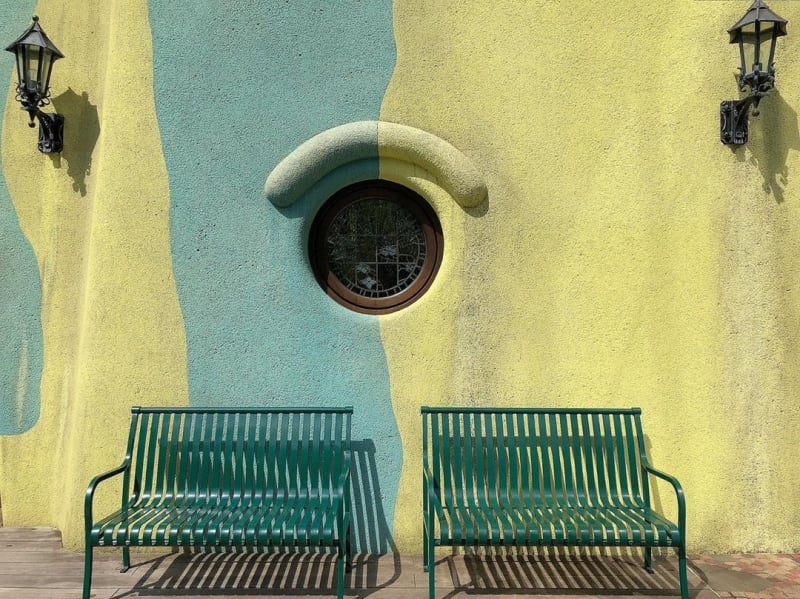
Image credit: llllllllllengqi
Around midday, my cousins and I watched a short animated film at the Saturn Theatre, a small auditorium with a friendly-looking moon and sun painted on the ceiling. With no English subtitles to rely on, I understood nothing. Still, I continued watching in companionable silence. Even now, I wouldn’t be able to tell you what the film was about, only that it somehow involved schoolchildren and a whale, and that it made me happier than I could remember.
That was the thing about Studio Ghibli. You could challenge the strange twists that cropped up in certain productions (When Marnie Was There). Or feel underwhelmed by films whose plots sank dejectedly under the weight of their ambition (Tales of Earthsea). But you could never question their soul.
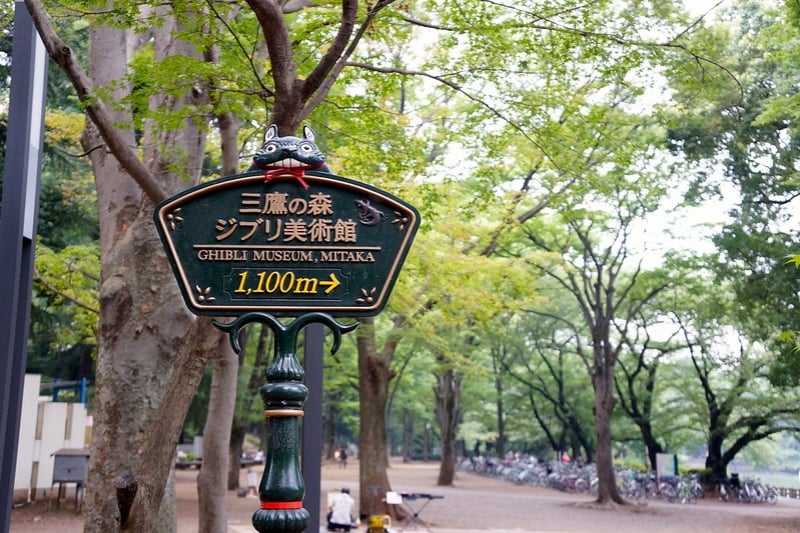
Image credit: Kentaro Ohno
When I emerged from Ghibli Museum that day, I found a spark I didn’t know I still had. The truth is that I never watched any of the films as a kid. I came into the surreal worlds of Miyazaki as a university student, and then, later, as a tired and washed-out creative person, hoping to find some clarity in the watercolour lightness of Spirited Away and Kiki’s Delivery Service.
What I learned after observing the halls of Ghibli Museum was this: Slumps and burn-out can happen to everybody, but if you are persistent and patient enough with yourself, you can emerge from the other side of the tunnel with a replenished spirit. Almost like returning to a wishing well after years of feeling dry.
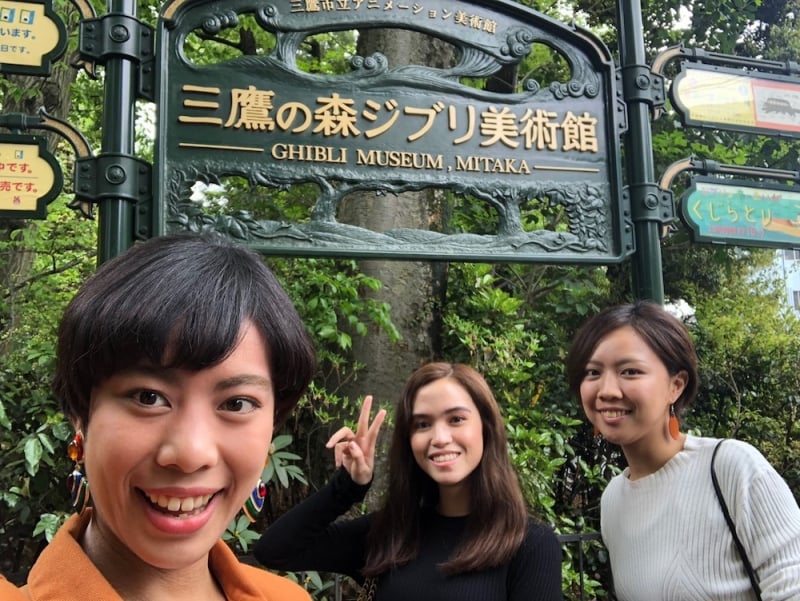
Image credit: Ami Tanaka
So if the wind has been knocked out of your sails, maybe it’s time to gather strength from that old childhood series you used to love. Or that enchanting sun-lit house buried in a forest, an easy train ride away from the bustling metropolis. And when those grey days strike again, there’s not anything left to do, really, but go back to the drawing board and start over, piece by piece. One sketch after another.
